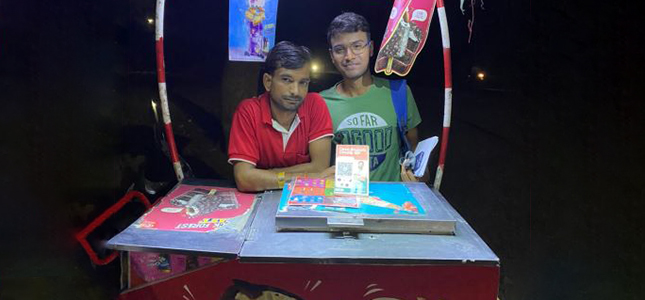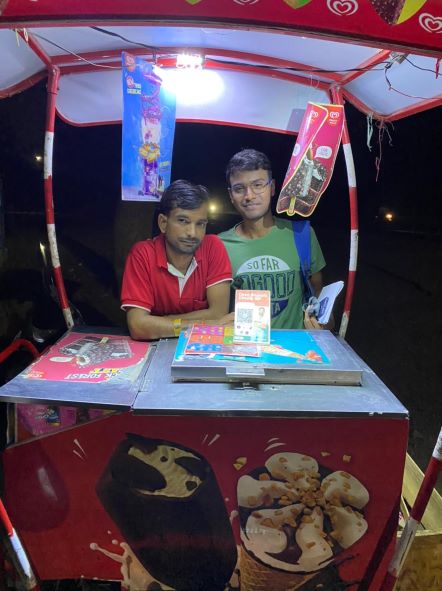
By Debashis Acharya (School of Economics, University of Hyderabad) and Alok Kumar Pandey (Department of Anthropology, University of Hyderabad)
The Reserve Bank of India (RBI), India’s central bank, announced the pilot launch of the Digital Rupee (e₹), a central bank digital currency (CBDC), in October 2022. The first pilot Digital Rupee in the wholesale segment (e₹-W) began on November 1, 2022, and over the next few months, RBI plans to launch the Digital Rupee in the retail segment (e₹-R) for customers and merchants.
Since India began its push for demonetization in 2016, the country’s payment system has significantly changed. Demonetization has also ushered innovations in the payment industry, such as QR codes, the Aadhaar Enabled Payment System (ArPS), the BHIM mobile payment app, and the Bharat Bill Pay System (BBPS), among others. But it is India’s Unified Payments Interface (UPI), which gained momentum after November 2016, that has received global attention. The UPI launched its pilot in April 2016, and banks started uploading their apps on the Google Play store in August 2016. Cash shortages due to demonetization led people to start using digital modes of payment, and the UPI became popular because there were no transaction costs and the mobile applications were easy to use for payments.
As of October 2022, data from the National Payments Corporation of India (NPCI) show 365 banks using the UPI, with 7305.4 million transactions of ₹12,11,5 billion in total value. Still, despite the RBI’s stated goal of facilitating “safe, secure, sound, efficient, and accessible and authorized payment systems in the country,” recent data point toward a unique scenario of increased digital payments coupled with a sustained interest in cash usage as well as digital payment hesitancy.
Given this scenario, we wanted to understand why some people have started using the UPI more and why some still prefer cash. We conducted fieldwork in three sites, described below, and our interview protocol focused on several key themes relating to the payment systems: cash versus digital payments, access, habits, benefits of existing systems, pain points, workarounds, harms, and the future.
The first site was the Greater Hyderabad Municipal Corporation (GHMC) region under the Cyberabad Metropolitan Police, in the vicinity of the Financial District and Hitech City. We conducted 27 in-depth interviews across a diverse set of users, including senior citizens/retired employees, young adults, salaried employees, small businesses (including grocery stores, vegetable vendors, pushcart vendors, etc.), and migrant construction workers/daily wage earners. Focus group discussions with senior citizens and migrant workers were conducted to understand the UPI landscape.
The second site comprised three villages (130 km away from Hyderabad) that were declared “cashless” in 2016–2017 by the local state government. Subsequently, media reported that these cashless villages returned to “cash only” payments in the latter part of 2017. The team carried out in-depth interviews and focus group discussions to understand their transition from cashlessness back to cash usage.
The third site was a village of traditional handloom weavers, Pochampally, where we studied the payment habits of weavers, who are known to generally deal in cash.
The analysis led to seven important themes emerging, shown in the word cloud below: the ease and convenience of using the UPI-based apps, green-tick verification in apps, the one-rupee test before making payments, transaction failures and risk perception, the role of fraud and dispute resolution in building trust, the diversified payment preferences of senior citizens, and the “cash-only” payment preference of certain users.
Okka Bharat Okkate QR: The All-in-One QR Driving UPI-Based Payments
The all-in-one scanner by Bharatpe, with the slogan “Okka Bharat Okkate QR” (One India with One QR), emerged as the major uptake factor for the UPI, making life easy for most UPI users by accepting payments from any UPI app without any charges. The users appreciated its fungibility advantage and interoperability among different mobile apps.
The UPI has become popular among small vendors, who appreciate how easy it is to use and how quickly it processes payments. They also believe it helps them save time during peak business hours and avoid both the hassle of managing cash boxes or bags and the risk of keeping cash on roadsides and makeshift huts. Most of them learned about the UPI and its possible benefits from their friends, family members, and the marketing agents pushing the business version of different UPI mobile apps. The cashback promised after installation of any UPI app and on recurring transactions in a particular app, and the gift vouchers per transaction, attracted most of the respondents of the study.
We found the users constantly verifying that they have a sufficient balance in their accounts or if payments have been credited into their accounts through UPI apps. The “green tick,” representing a successful transaction between the sender and receiver of money, became an important symbol. Some vendors scrutinize the tick mark to ensure that a payment was authentic.
“I check for tick mark and amount on customer’s phone and verify it by checking message on my phone. If I do not receive a message, I check the app for confirmation. In case of network issues at the time of payment, I exchange phone numbers with the customer and call them later if I don’t receive the money. The customers usually pay later on. I have faced small loss up to Rs 50 or Rs 100 from customers who don’t pay, but I ignore such loss. I have not faced any big loss due to cheating by customers. I have an eye for spotting dishonest people and if I get suspicious, I will ask the customer to send a screenshot of the payment receipt on WhatsApp or not sell anything to the customer.” (Pushcart ice cream vendor)
Though users appreciate the ease and convenience of digital payment, some perceive the UPI to be risky and fraud-prone due to occasional transaction failures. However, this does not generally cause users to abandon UPIs; they merely shift platforms (e.g., G-Pay platform to PhonePe). When they experience transaction failures, users may not know if a transaction is complete or reversed for several days, which suggests a regulatory or redressal vacuum.
Thus, the perception of risk plays out in the context of system safety and the system’s ability to prevent fraud and protect its users’ information. Users try to minimize the risks of the UPI by verifying UPI transaction alerts on their smartphones, physically maintaining records of transactions on paper, and educating themselves through social media.
These risks underscore the role of trust in the adoption of digital payment systems. In Muskanipet, a cashless village project of 2016, the postmaster was hesitant to promote digital payments from the Indian Post Payments Bank to avoid risky situations, leading to trust issues among fellow villagers.
“Sometimes money gets stuck while executing a transaction. The money neither goes back to the customer’s account and neither can I give money to the customer. This has led many customers in the post office blaming the postmaster for stealing the money from the customer’s account. Customers are not willing to wait for the money to be sent back to their account. Hence, I stopped offering this service to everyone.” (Postmaster, Muskanipet)
User experiences of fraud, scams, and dispute resolution play a significant role in building trust in the UPI and digital payments. Our senior citizen respondents emphasized these aspects of digital payments in light of their own experiences of fraud and scams while questioning the role of the “state.” They were also curious to know how the CBDC would solve such problems.
On our way back from the cashless villages, about 70 kilometers before Hyderabad, we came upon a vegetable market run by women from nearby villages. There was no UPI with anyone, and we didn’t see a single smartphone.
There were about 40 women sellers in the market, and they only accepted “cash” to buy vegetables. Given the above payment habits and preferences among a diverse set of users, can the central bank ignore these women—and the many others like them—in designing its CBDC? Will the CBDC accelerate financial inclusion, or help only those who are financially included at present? Maybe we need to wait for the results of the pilot program to tell us more.
Conclusions
The uptake and acceptance of UPI-like payments and the CBDC in the future will depend on improved and easy grievance-redressal mechanisms for people using digital payments now. The state and its agencies, such as RBI and NPCI, need to do more to educate people and ensure safe transactions. This is what our senior citizens asked: “Is my money safe in your bank when I go digital?”
For people who still prefer cash and hesitate to go digital, the payment system needs to remain flexible. People like the weavers and women vegetable vendors in our study should not be forced to use the UPI or CBDC. They will start using digital payments and CBDC once they are convinced, over time. The state should create an environment and infrastructure that focuses on security for building trust in digital payments.
This work was conducted as an independent 2022 research project on central bank digital currency and financial inclusion, in collaboration with Maiden Labs, the MIT Digital Currency Initiative, and the Institute for Money, Technology & Financial Inclusion (IMTFI), and funded by the Gates Foundation. You may view Professor Bill Maurer’s context of this study on the IMTFI blog and details of new research report release here.





